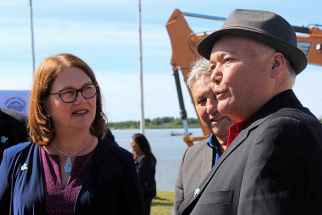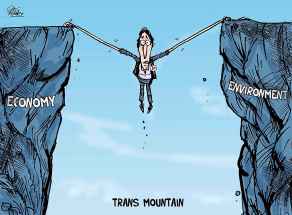At the crossroads Canadian urban planners on panel unanimous: Winnipeggers should seize opportunity to open Portage and Main, the city's 'Confusion Corner for pedestrians'
Read this article for free:
or
Already have an account? Log in here »
To continue reading, please subscribe:
Monthly Digital Subscription
$0 for the first 4 weeks*
- Enjoy unlimited reading on winnipegfreepress.com
- Read the E-Edition, our digital replica newspaper
- Access News Break, our award-winning app
- Play interactive puzzles
*No charge for 4 weeks then price increases to the regular rate of $19.00 plus GST every four weeks. Offer available to new and qualified returning subscribers only. Cancel any time.
Monthly Digital Subscription
$4.75/week*
- Enjoy unlimited reading on winnipegfreepress.com
- Read the E-Edition, our digital replica newspaper
- Access News Break, our award-winning app
- Play interactive puzzles
*Billed as $19 plus GST every four weeks. Cancel any time.
To continue reading, please subscribe:
Add Free Press access to your Brandon Sun subscription for only an additional
$1 for the first 4 weeks*
*Your next subscription payment will increase by $1.00 and you will be charged $16.99 plus GST for four weeks. After four weeks, your payment will increase to $23.99 plus GST every four weeks.
Read unlimited articles for free today:
or
Already have an account? Log in here »
Hey there, time traveller!
This article was published 07/09/2018 (2653 days ago), so information in it may no longer be current.
Equipped with nothing more than a few boards fastened to a do-it-yourself scaffold frame, Hazel Borys and I situated ourselves at Portage and Main on a hot and sunny summer day in 2016.

Borys, a Winnipeg-based urban thinker, collaborated with me to renew the Downtown Winnipeg Business Improvement Zone’s strategic plan — an organization I was helping to lead at the time. Passersby, from residents and tourists to business owners and politicians, shared with us their stories about the iconic corner and their hopes and dreams for it, while indicating their streetscape, plaza and road design preferences.
The consensus? If we want our downtown to have a fighting chance at being a place for everyone, we need to reopen this intersection to pedestrians; and economic development and community well-being can only be achieved when downtown is a destination, not just a transportation link.
The strategic plan was guided by a series of pop-up interview sessions in several downtown districts, including North Main, Chinatown, Broadway, the SHED district, Graham Avenue, The Forks and, of course, Portage and Main, canvassing feedback from more than 2,000 diverse people. We were able to tap into voices that usually are not heard — from kids to homeless people. We even imported a model of downtown Winnipeg into the popular game, Minecraft, for kids and kids at heart to share their perspectives on downtown.
Participants, through these activities, were optimistic about downtown’s future. In particular, of Portage and Main’s positive evolution, dreaming outside the realm of the practical and the political — pondering such interventions as a skytrain or a roundabout.
The sentiments shared by those during these engagement activities were reiterated by my grandmother, June Gray, during a July visit to Portage and Main. Gray, now 91, lived just three short blocks from Portage and Main in 1949. After a 69-year hiatus from downtown (she lived the bulk of her family life in rural Manitoba), my grandmother overlooked the intersection, witnessing both cars passing through and people genuinely puzzled about their next manoeuvre.
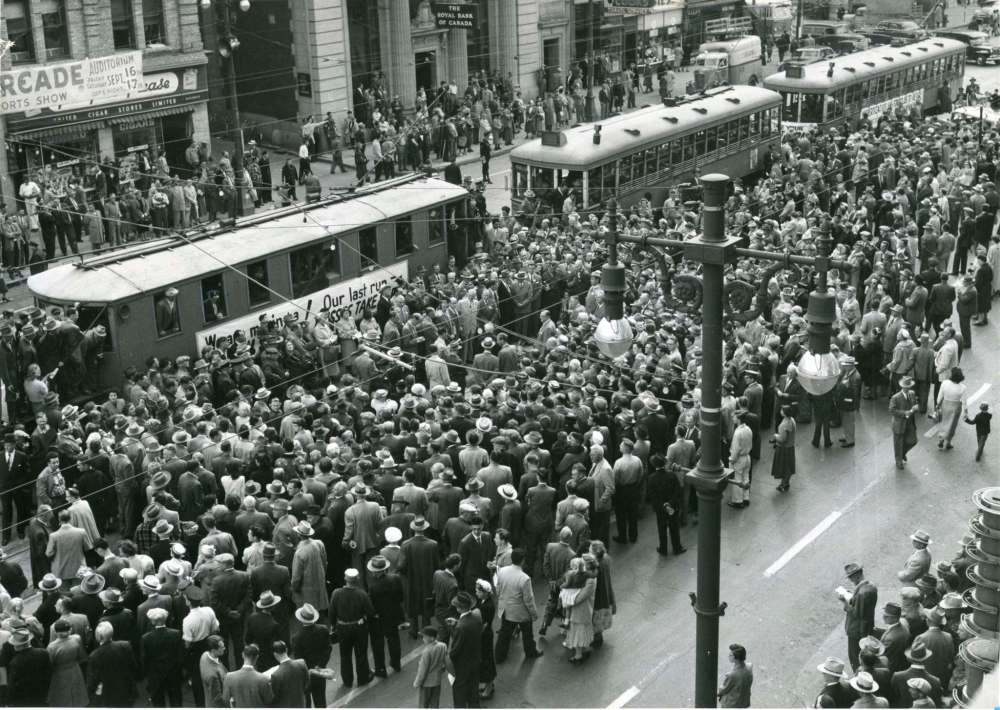
“This doesn’t look safe at all,” she said to me.
“This corner looks nothing like what I remember. There used to be some nice stores, and you could cross the street. But it was more than just the stores that made it great. It was a place where people gathered.”
Safety, she noted, is an indisputable challenge to visitation, a factor that would likely be a deterrent for others also aging in place, defined as having the health and social supports and services you need to live safely and independently in your home or your community for as long as you wish and are able.
“When you see more people, especially on the ground, you feel more safe,” Gray said.
“I think the city should open it up and let people cross. It wouldn’t be a long wait for drivers. For example, I use a walker, and I regularly beat the woman below my residence to dinner every day. What is the city waiting for?”
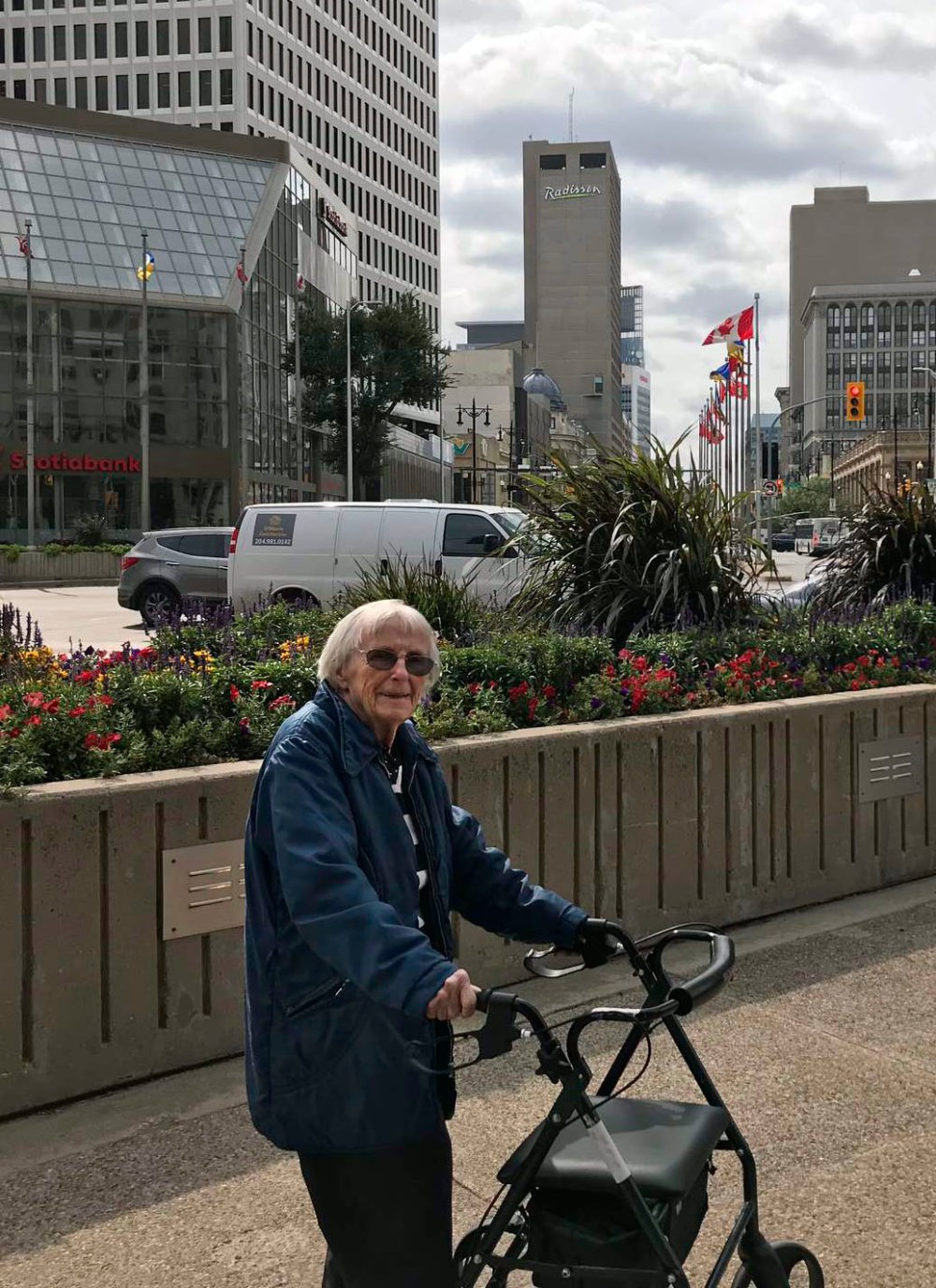
The city is waiting for the result of a ballot question in next month’s civic election. While Winnipeggers go to the polls to elect their mayor, city councillor and school trustees, they’ll also be asked whether they support reopening Portage and Main to pedestrians. It’s the first time in 35 years that voters here will be asked a ballot question.
While the results would be non-binding, current Mayor Brian Bowman said he would respect the public’s wishes. During his inaugural mayoral campaign in 2014, Bowman promised to remove the barricades that prevent foot traffic across the intersection.
Jenny Motkaluk, his main competitor for the mayoralty, is opposed to reopening the intersection.
To city planners from across the nation, the issue of Portage and Main is seen as a battle for better walkable environments.
“The Portage and Main conversation comes at a time when people are rallying to have equal opportunity and options to access our cities,” said Lyla Peter, director of development and zoning services for the City of Edmonton. “There is a growing recognition that past standards are not necessarily appropriate or desired for now. What worked in the past doesn’t always work today.”

Peter added: “It used to be good planning practice to create these networks that catered to one group (i.e., drivers). However, this practice no longer necessarily delivers the city that people are wanting now. The joy of planning is identifying how our cities are changing, and figuring out how to best adapt. If we don’t allow our infrastructure, policy and practices to change, our cities will not meet the needs or desires of our residents.”
For planners such as Peter, opening up Portage and Main is but one component of creating a desirable place for people of all ages and abilities. While efforts are currently underway to educate the public about Portage and Main in advance of October’s election, through the recently formed Vote Open Winnipeg Coalition, I led a discussion with a few of Canada’s most prolific voices on planning — Borys, Ryan Walker, Leela Viswanathan, and Brent Toderian — to offer alternate voices to the already complex and robust discourse.
This national panel considered various scenarios: what happens if Portage and Main opens; what happens if it doesn’t; and the ways in which we can engage the community.
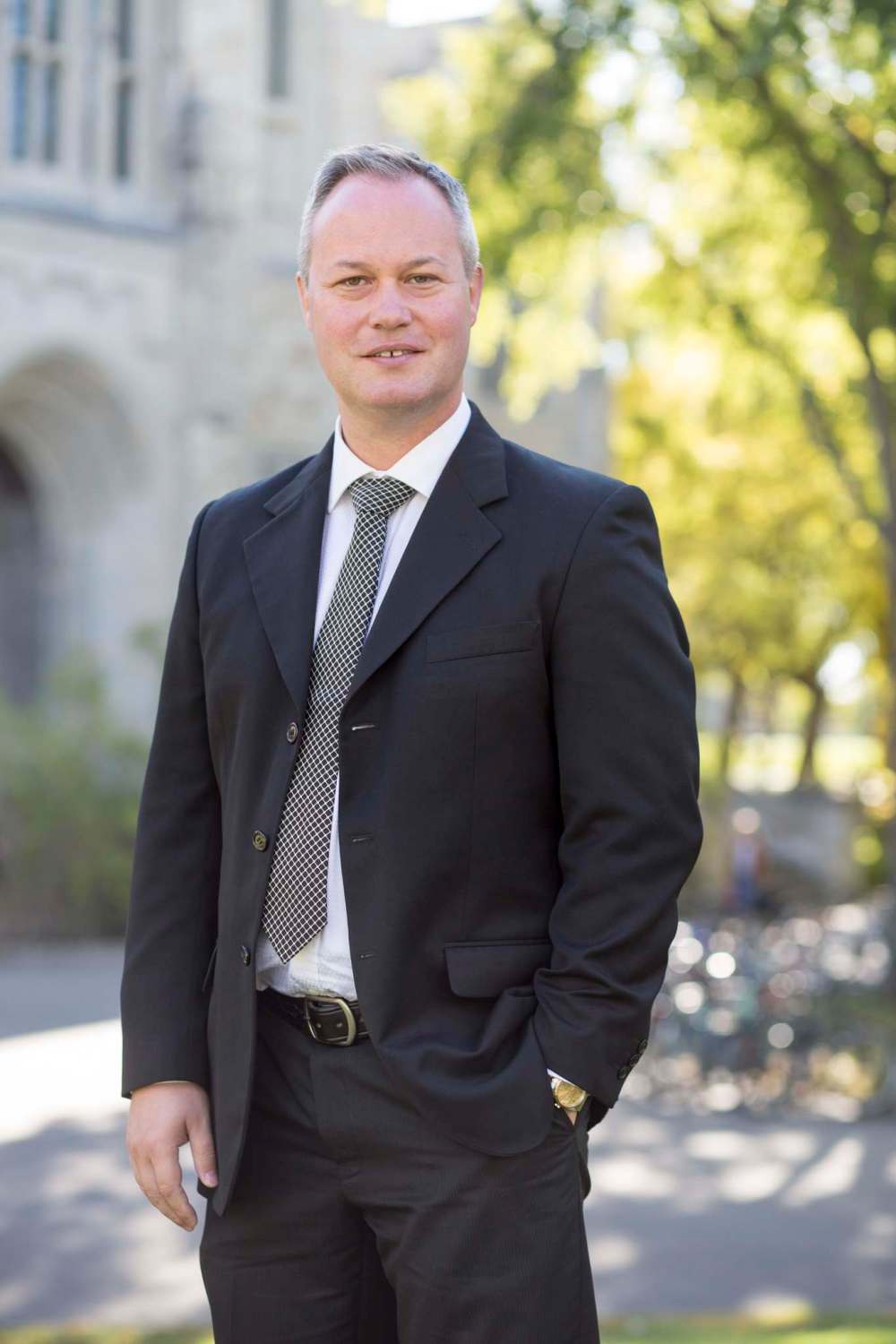
As president and CEO of PlaceMakers, Borys has helped cities around the world reduce the red tape to make development processes leaner, helping guide governments through zoning reforms — allowing walkable, mixed-use, compact, resilient places to develop by-right, which is a more streamlined approach to zoning. Online and through other media channels, Borys has been a loud and vocal champion of Portage and Main’s reopening.
Walker is a professor and chair of the University of Saskatchewan’s Regional and Urban Planning program. He was born in Winnipeg, but has lived in many places, as far away as Tanzania, Swaziland and New Zealand. His area of expertise is urban planning, development and design.
Toderian has supported cities such as Auckland, New York, Oslo, Sydney, and Helsinki. Following six years as Vancouver’s chief planner with accomplishments including the 2010 Winter Olympics-related planning and design and waterfront and skyline-shaping strategies, he started his own practice, TODERIAN UrbanWorks in early 2012. He is also the founding president of the Council for Canadian Urbanism, a national organization that chose to host its annual summit in Winnipeg last year.

Born in Montreal, Viswanathan, serves as an associate professor and director of the School of Urban and Regional Planning at Queen’s University in Kingston, Ont. She is a celebrated speaker on topics that include social planning and approaches to planning with Indigenous people.
In their conversation, Borys, Walker, Toderian, and Viswanathan contend that the way the street, sidewalk and public space adapts to pedestrians will be part of Portage and Main’s evolution and success.
What are the implications of keeping Portage and Main closed?
● Borys: Portage and Main is the iconic corner of our city. It’s the address that most Canadians are able to identify with Winnipeg. Keeping this corner closed signals to Winnipeggers and the world that we are a car city. While we will never do away with the car, at least not in my lifetime, offering ways to get around the city on our own steam by walking and biking is critical to both public health and the health of our economy. Keeping the intersection closed hurts our economy and well-being.

● Walker: I was born in Winnipeg and lived there until I was nine years old. One of my most vivid, and odd, memories is meeting my mom for lunch occasionally at the Richardson building, where she worked, and needing to scurry underground to cross the Portage and Main intersection. It isn’t a dignified treatment of pedestrians. And everyone is a pedestrian; motorists, cyclists, transit users are all pedestrians where they originate or are destined. Portage and Main should be a wonderful and monumental intersection of historic importance, a destination in itself. But also connecting the pedestrian-scaled destinations in its orbit, such as The Forks, downtown businesses, the Exchange District on both sides of Main, among others. And for those people with mobility challenges, it’s even less dignified to have them going below grade or making sweeping detours to get across the intersection. Winnipeg has some stunning architecture at Portage and Main, like the historic Bank of Montreal building, some beautifully designed seating areas, captivating public art, but it’s sequestered behind cement barricades that are fundamentally at odds with the nature of these designed and improved spaces. These spaces are begging to be freed to greater open public exposure and enjoyment.
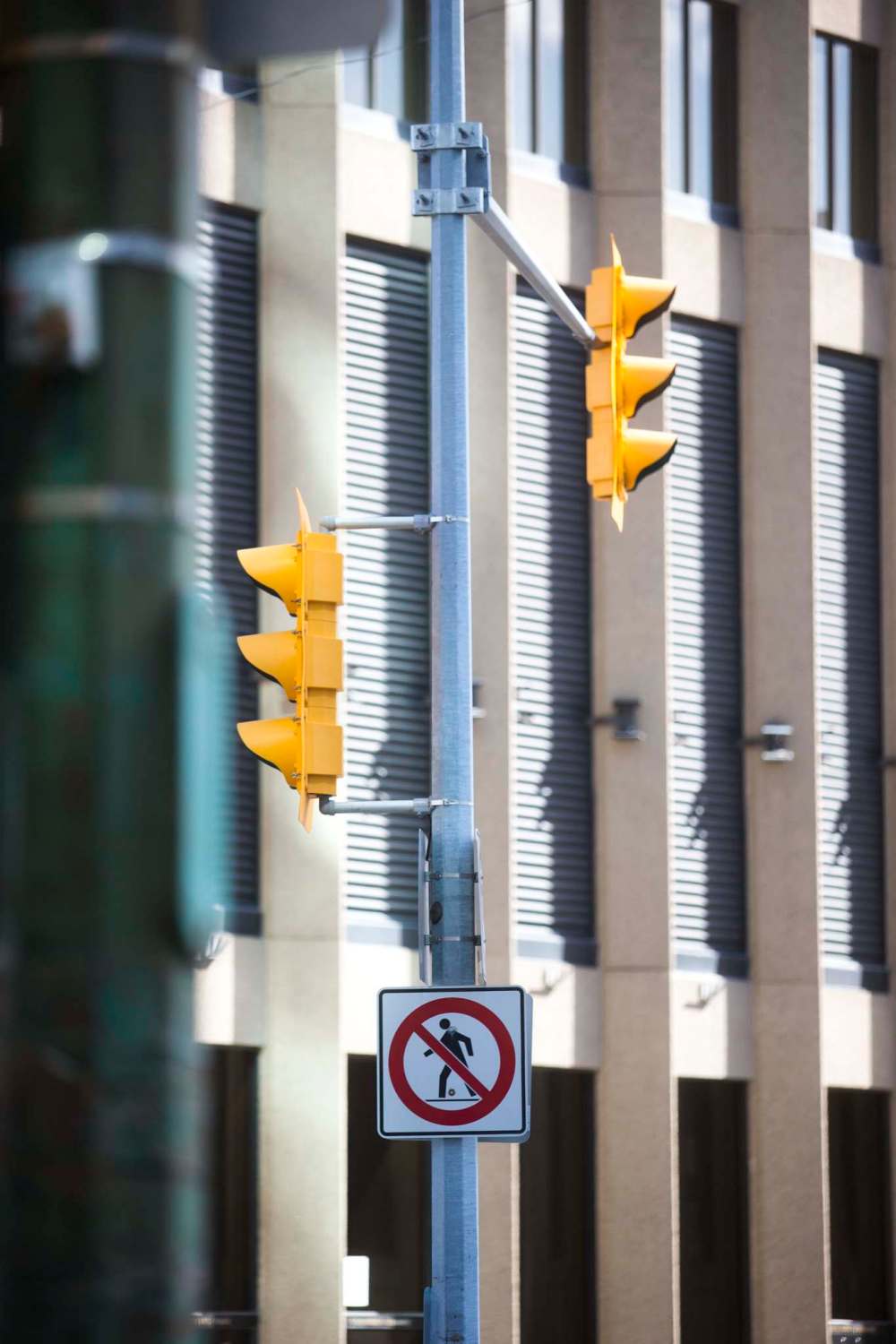
When I was in Winnipeg recently staying at a hotel downtown and walking back and forth between precincts of the downtown in all four directions from Portage and Main intersection, not only did I find it frustrating to walk a block in the wrong direction to get to a pedestrian crossing that would allow me to backtrack in the right direction, but I also found it confusing. Portage and Main is Winnipeg’s other, but more troublesome, Confusion Corner for pedestrians. The barricaded and fortified nature of Portage and Main also serves symbolically and functionally as a dividing line between the north and south downtown. This divide has never served Winnipeg’s people well.
● Toderian: If Portage and Main remains unchanged — likely the worst intersection for pedestrians, for people anywhere in Canada — it will remain a heavy anchor on the progress that Winnipeg has been working so hard to make to improve its downtown. It will also impede the success of the city as Winnipeg moves into the new “people and place-focused era” of have/have-not cities.
● Viswanathan: I am outsider to Winnipeg. I don’t live in Winnipeg. I have been a visitor to Winnipeg on three occasions over the span of 22 years. During those visits, each one in a different season, I spent most of my time downtown. Portage and Main is iconic to Winnipeg. The fact that it is not accessible to pedestrians or to anyone using a mobility device or navigating a stroller at street level is a big mistake. As an outsider, Winnipeg has always been, in my view, the gateway city to the Prairies.
Keeping Portage and Main closed to pedestrians is a missed opportunity to build a positive image for the city’s iconic downtown intersection. But more than the idea of Portage and Main’s inaccessibility, I think of the experience of being a pedestrian in the city. As a pedestrian, I experienced how downtown Winnipeg has these amazing sensors at small intersections and at traffic lights to enable pedestrians to “walk” across the street even as pedestrians approach the intersection, making vehicles wait. This makes me feel safe and empowered as a pedestrian; it makes me want to experience more of the city!
By contrast, the intersection of Portage and Main does the exact opposite. By making pedestrians go underground in order to make their way above ground, they basically take pedestrians away from life at the street level and force them to navigate the intersection from underground. I will admit that when I first encountered the intersection, I went down underground and emerged at the wrong corner that I had originally intended, this is years after learning how to navigate Montreal’s underground city! That was a frustrating experience. More recently, I actively chose to bypass the hostility of navigating the Portage and Main intersection in order to make my way by foot to the Canadian Museum for Human Rights and The Forks, prime tourist attractions. It’s frustrating because it doesn’t have to be that way.More recently, I actively chose to bypass the hostility of navigating the Portage and Main intersection
What will happen if Portage and Main reopens to pedestrians?
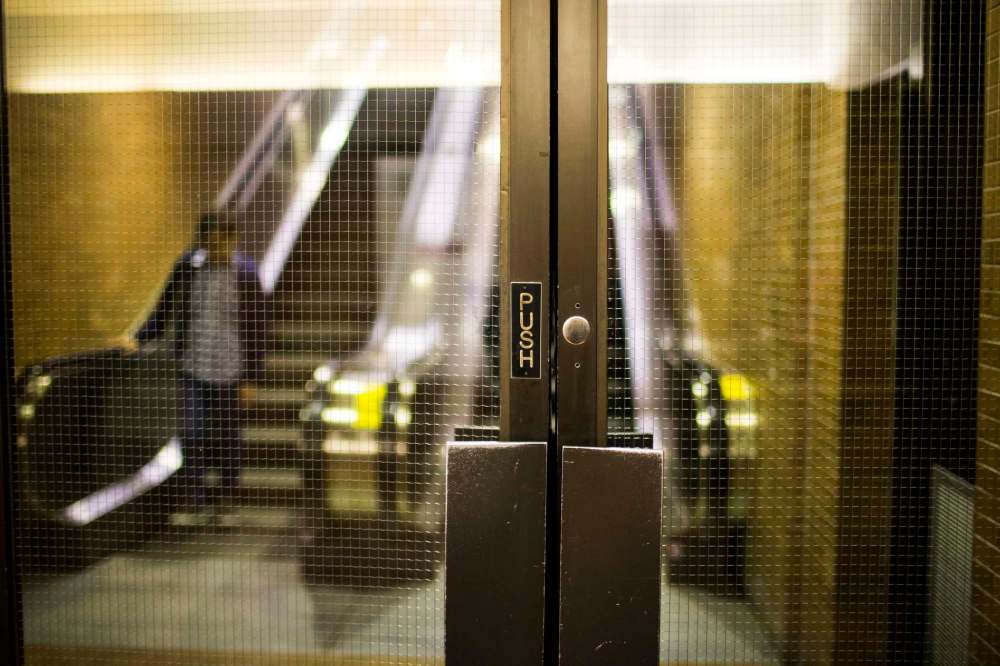
● Borys: When Portage and Main reopens to pedestrians, the four quadrants of downtown will be reconnected. This ease of movement will not only nurture economic exchange, it will also increase the safety and well-being of women and people with mobility challenges. I am unlikely to descend into the underground after 6 p.m. if I’m alone because of safety issues, so that makes the heart of our city off limits to me for about half the hours of the day. However, if I need my favourite downtown tailor or drug store, I am no less likely to go to these shops if I can cross at grade. In fact, I may be more likely because I will have a few extra minutes on my hands because of being able to cross where it’s convenient.
● Walker: Winnipeg would join the ranks of vibrant big city downtowns around the world by prioritizing pedestrian mobility and connectivity as a first order, followed by other travel mode choices. People use famous examples like the transformation of Times Square in New York City. But I’ll say that in my city, Saskatoon, we’re also prioritizing the redesign of our city centre main intersections, like at Idylwyld Drive and 20th Street so that we can better welcome pedestrians and cyclists to travel between the east and west sides of it, not just motorists. Between New York and Saskatoon, Winnipeg will find itself in good company opening up Portage and Main. Opening Portage and Main to pedestrians would be another important step in improving economic vibrancy and versatile connectivity in the downtown and prominent spaces and places nearby. Winnipeg has done some great things downtown in the past decade or so, and this would be another step in that direction.

● Toderian: If it’s designed well, not only would it dramatically transform the key intersection, better connect things in the downtown and empower the success of the blocks and projects around it — it would also send a powerful message to the community, the market, and those considering coming to or investing in Winnipeg, that the city has turned an important corner toward building the kind of places that people actually love, and that make cities successful.
● Viswanathan: In the simplest sense, opening up Portage and Main would mean that people can finally cross the street. Planners have so many tools to build open, public spaces, and the City of Winnipeg has accessibility design standards that can make the city accessible at the street level. It’s not like there are no options or tools to enable the transformation of Portage and Main to meet accessibility standards and baseline standards to ensure that people can safely cross the street. But it does mean that the city has to be willing to put pedestrians and cyclists on the same level of priority as cars. In a way, I think the technical solution to making Portage and Main accessible can be developed — this is what planners do — but the political will has to be present to uphold principles of universal design and accessibility.
Reopening the intersection to pedestrians would reflect Winnipeg’s open invitation to residents and visitors and a declaration that it wants to be walkable and accessible to all people using wheelchairs, walkers, strollers and their feet. Portage and Main would become the iconic image and its accessibility would mean that the city is following through on the principles of open access, not just putting out standards for accessible design, but practising them in the most public of ways.Reopening the intersection to pedestrians would reflect Winnipeg’s open invitation to residents and visitors and a declaration that it wants to be walkable and accessible to all people using wheelchairs, walkers, strollers and their feet
During my last visit to Portage and Main, this summer, I imagined a scramble crosswalk (pedestrians can exclusively cross in all directions, including diagonally, for a designated length of time) at the intersection and how different and fun that would feel compared to the hostility it currently imbues towards pedestrians, forcing them underground.
What can be done to inform and engage the community?

● Borys: People need to understand the tradeoffs: a very few extra minutes of time spent in the car in exchange for making downtown much more productive and beautiful. I keep hearing people complain about the cost of renovating the intersection. Let’s keep in mind that all intersections require maintenance over time, so even if we do nothing, it requires the investment of our tax dollars. Do we want to invest in a way with very low return on investment by re-doing things the way they are today? Or do we want to have much higher return on investment because we have made downtown more productive and connected?
● Toderian: This kind of decision usually doesn’t lend itself to a referendum, because it can be counterintuitive, and because people who oppose it tend to assume the worst — usually it needs visionary leadership to get it done, and afterward those who were against it tend to observe that the “world hasn’t ended” and the results are actually a lot better and more successful than they anticipated. I’ve seen it over and over again in cities in similar moments. But given that a referendum has been directed, I believe the conversation needs to be positive and two-pronged: what opening the intersection will do for a better, more livable, more successful downtown; and what choosing a better future will do for the image, “brand,” reputation and resulting success of the entire city at a time when employers and employees alike are using powerful examples like this to make their decisions on where to settle and invest.

● Viswanathan: Teaching the public about the history of Winnipeg’s wide avenues and Portage and Main in particular, and similar large, wide intersections from across the world — examples where cities have conquered the problem of car traffic and the numbers of people who want to just cross the street — wide and busy streets. What happened to the discussions that were held with the community by downtown business improvement leaders over the past few years about visioning the reopening of Portage and Main? Precedents, visioning exercises and open discussions of the technical complications, if any, of addressing the intersection at Portage and Main are warranted. As an outsider, when I heard about the decision to bring the opening up of Portage and Main to a referendum, I thought that this issue should be about the opportunities for community building and engagement, not simply as a purely political and fiscal decision.
Why is this issue an important one for planners across the nation?
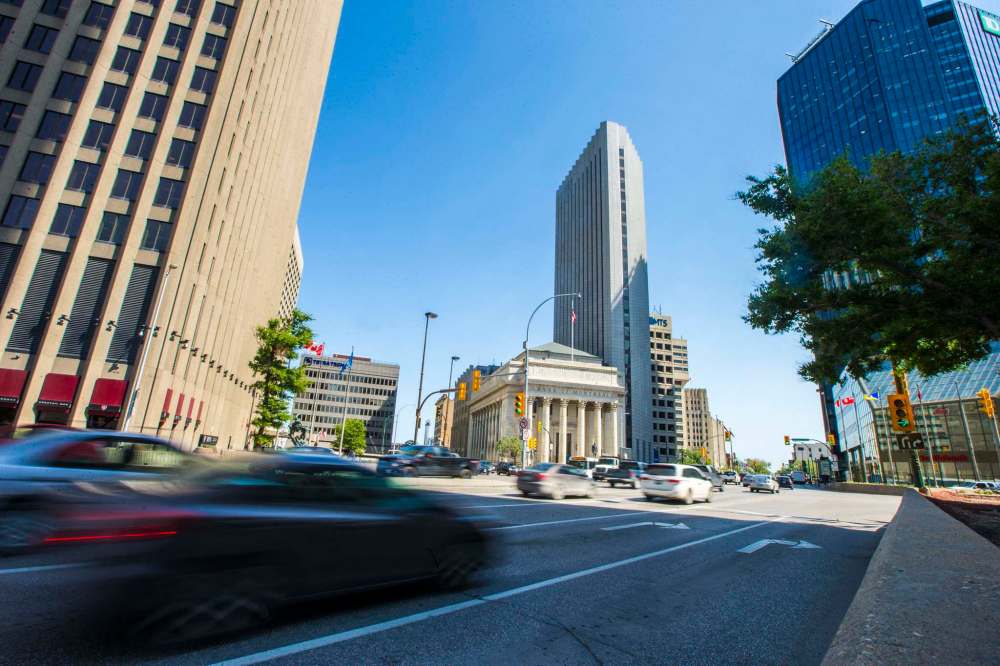
● Borys: How we engage the public to prioritize placemaking is essential. I would never recommend these sorts of interventions for any intersection on Pembina Highway because this is a street that does — and should — prioritize cars. However, the heart of our city should prioritize pedestrians. In under a decade, more than 112,000 people were killed in speeding-related crashes in the U.S. Last year alone, over 37,000 people died in car crashes in the U.S. (NHTSA and Streetsblog, 2017). The numbers in Canada are not quite as extreme, but until we get street character in line with urban character, we will continue to have less-than-ideal results.
● Walker: This is an important issue for planners across the nation because prioritizing the vibrancy of our downtowns, which also means prioritizing movement and use in public spaces that is at the human scale, is a national issue. In fact, designing for pedestrians makes intersections safer for all users. One of the key design considerations for streets and intersections is to design for the most vulnerable user, and the rest of the users will typically read the pattern and behave accordingly. All eyes will be on Winnipeg at this decision point, looking to see whether the great leaders in Prairie urbanism zigs or zags when faced with this opportunity at Portage and Main. Winnipeg is a great city, a really great city. Portage and Main the way it is now — closed to pedestrians — is not suitably designed for this city at this time.

● Viswanathan: As a place, opening up Portage and Main could make it representative of Winnipeg’s economic, cultural and historical vitality, which is something planners really care about when making cities livable. As planners we are always looking for case examples that we can learn from. In this way, Portage and Main is an example of where Winnipeg can do a great thing — not just a good thing, but a great one — by opening up this intersection for universal access. In the simplest and yet most important sense, it would mean that people can cross the street along with cars and bicycles and claim the space as equals.
● Toderian: This decision doesn’t directly affect other planners or cities across the country — if Winnipeg misses this opportunity, it will only hurt Winnipeg’s future and, frankly, other cities that are in competition with Winnipeg for talent and investment will capitalize on that mistake. But having said that, Canadian cities, and Canadian planners, do root for each other to succeed, and we’re inspired when our fellow Canadian cities do well and make smart decisions for people-oriented cities. It inspires other cities to do better, too. And Portage and Main has become so infamous as the worst intersection for people in Canada, this moment really does have the rest of the country’s attention. What will Winnipeg do with that attention?
Jason Syvixay has worked as an urban planner in both the public and private sector, having worked as managing director of the Downtown Winnipeg BIZ and a community planner with HTFC Planning & Design. More recently, he has focused his planning work in the area of infill development.
History
Updated on Friday, September 7, 2018 10:48 PM CDT: Adds photo




